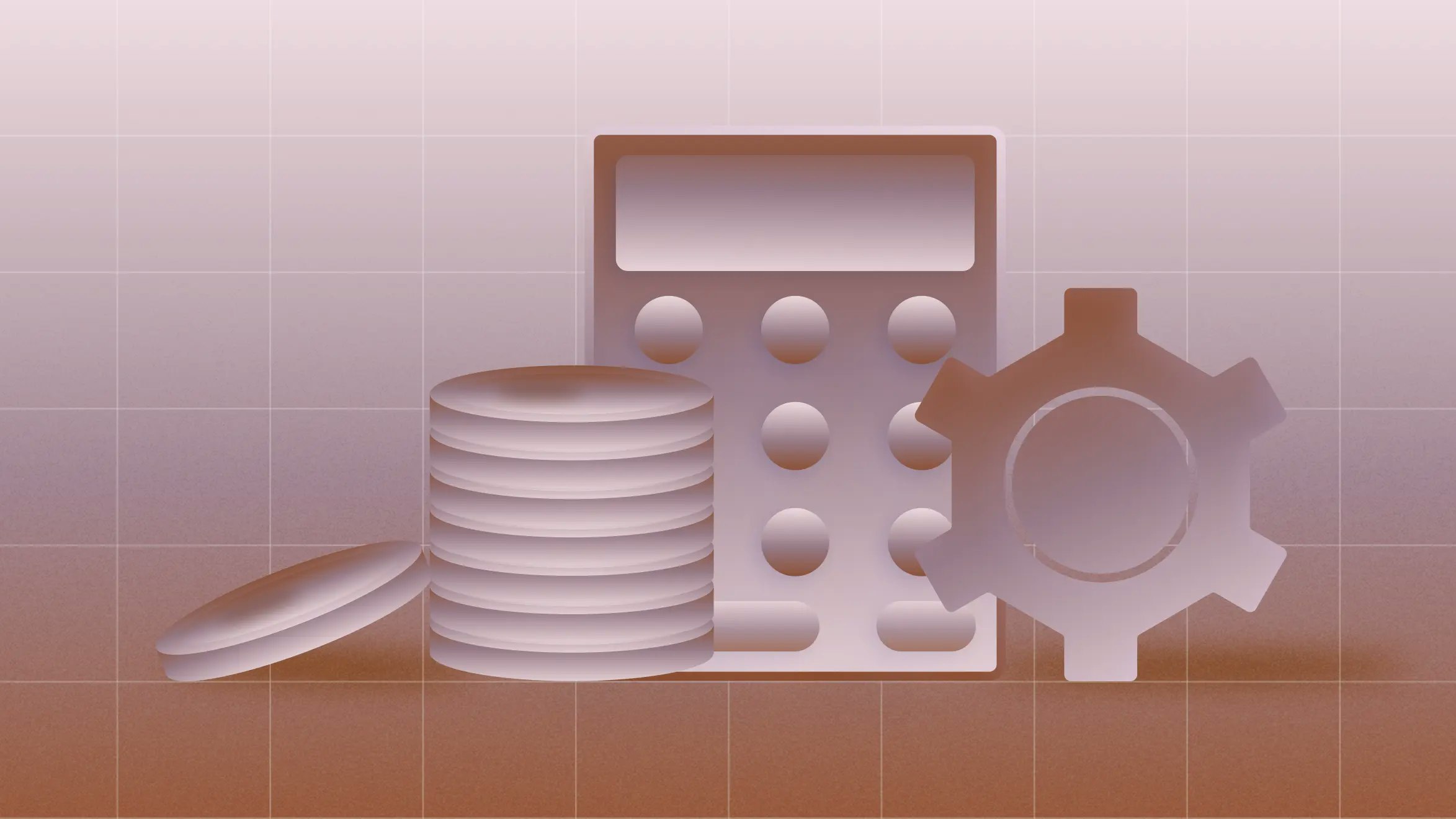The value of pro forma financial statements

If you’ve been talking to investors, advisors, or even a CFO, you’ve probably heard the term “pro forma financial statements” pop up. At first glance, it might sound like uninspiring accounting jargon, but it’s actually one of the most useful tools founders can have.
Think of a pro forma as a form of financial storytelling. Instead of showing where your business has been, it illustrates where your business could go. Whether you’re preparing to fundraise, mapping out the impact of a new product, or testing scenarios for growth, a pro forma statement helps you translate your vision into numbers that investors can weigh and you can plan around.
Far from just a spreadsheet exercise, pro forma financial statements give founders the ability to model possibilities, communicate ambition with clarity, and make more confident business decisions.
In this guide, we’ll break down what pro forma statements are, when to use them, and how to build one — even if you’re new to financial modeling.
What are pro forma financial statements?
At their simplest, pro forma financial statements are projections. They’re a forward-looking version of your financials, based on assumptions about how your business will perform.
Pro forma statements are valuable tools for founders. Unlike financial statements that follow Generally Accepted Accounting Principles (GAAP), a standardized approach for capturing historical results, pro formas are built to forecast. This means pro formas are designed to be forward-looking and flexible.
In addition to complying with GAAP, this kind of scenario planning is considered a best practice. According to McKinsey & Company, organizations relying on probability-weighted, scenario-based forecasts are better equipped to navigate uncertainty.
Key differences from GAAP financials
Although both types of statements deal with your company’s numbers, the intent and structure of GAAP and pro forma financial statements are very different. These contrasts explain why investors often ask for both:
- Purpose: GAAP shows what has already happened; pro forma shows what could happen.
- Flexibility: Pro formas allow you to adjust for hypothetical events, such as a funding round, acquisition, or product launch.
- Perspective: Investors see pro formas as a window into your vision and an indicator of your ability to plan realistically.
Common pro forma formats that founders prepare
Not every startup needs to prepare every type of pro forma all at once. But knowing the difference between these main formats will help you decide which version to build first, based on your audience and goals.
Three common types of pro forma statements include:
- Pro forma income statement (P&L): This is used to project revenue, expenses, and profit over a period of time. Sometimes referred to as a pro forma P&L, this is the most common format.
- Pro forma balance sheet: This is helpful for forecasting assets, liabilities, and equity at a future point in time.
- Pro forma cash flow statement: This format is used to estimate inflows and outflows of cash, showing liquidity under different scenarios. It’s sometimes called a cash flow pro forma.
Taken together, these formats give you and your investors a clearer sense of your company’s financial trajectory.
Get accurate financial forecasts tailored to your business model. Choose the version that fits your needs and start projecting performance in minutes:
→ Pro Forma Ecommerce Pro Forma Income StatementOpens in new tab
→ Pro Forma Agency & Consultant Pro Forma Income Statement Opens in new tab
→ Pro Forma SaaS Pro Forma Income StatementOpens in new tab
→ Pro Forma Balance Sheet TemplateOpens in new tab
When startups use pro formas
Startups operate in environments full of unknowns.. Pro forma financial statements give founders a way to explore “what if” scenarios before committing resources.
Below are four of the most common scenarios in which a pro forma isn’t just helpful, but essential:
- Fundraising or pitch decks: Investors don’t just want to know where you are today; they want to know where their capital could take your startup. A well-structured pro forma statement demonstrates that you’ve thought through growth levers, expenses, and funding needs.
- Internal scenario planning: From testing what happens if churn rises, to modeling the impact of a price increase, pro formas let you play out scenarios before they unfold. This makes them a practical tool for strategy and resource allocation.
- New product or market expansion: Thinking about adding a service line, entering a new city, or scaling into another market? Pro formas help estimate costs, potential revenue, and the break-even point (BEP).
- Mergers and acquisitions (M&A) or exit planning: In acquisitions or potential exits, pro formas show what a combined business might look like, or how your numbers could scale under new ownership.
For early-stage companies, these use cases make pro formas less of a “nice to have” and more of a fundamental planning tool.
What to include in a pro forma statement
A good pro forma requires more than just plugging numbers into a spreadsheet. Instead, you’ll use it to paint a probable picture of how your business might perform. To do that, you’ll need to capture the right components, including revenue assumptions and planned spending.
Here are the elements that make a pro forma meaningful and credible:
- Revenue projections: Break down expected revenue by product, service, or customer segment. For SaaS, this could be monthly recurring revenue (MRR); for an agency, projected billable hours.
- Key expense categories: Payroll, marketing, rent, and cost of goods sold (COGS) are common drivers.
- Assumptions: Every projection depends on inputs like growth rate, churn, hiring pace, pricing, and more. Document these clearly so readers understand your logic.
- Capital raised or future funding: Show how new capital will be used, and how it changes your runway or growth curve.
The more transparent you are about your assumptions, the more credible your pro forma becomes. Investors aren’t expecting certainty. They’re looking for structured thinking and awareness of the levers that matter.
Walkthrough example of a pro forma financial statement
Theory is helpful, but seeing a pro forma in action makes it easier to understand how the pieces fit together. Let’s walk through a simple example to show how assumptions feed into a projection, and what the numbers can reveal.
For this exercise, we’ll review a SaaS company’s one-year pro forma income statement. It’s a simplified look at the first month, midpoint, and final month of a one-year projection.
Assumptions:
- Starting with 200 customers paying $50 per month
- Monthly churn of 5%
- Monthly new customer acquisition of 30
- Marketing spend of $5,000 per month
- Payroll of $15,000 per month
- Miscellaneous expenses of $2,000 month
Pro forma income statement example: Year 1 projection
Revenue | Expenses | Net income | |
|---|---|---|---|
January | $10,000 | $22,000 | -$12,000 |
June | $14,500 | $22,000 | -$7,500 |
December | $19,000 | $22,000 | -$3,000 |
This simple model shows steady revenue growth, though expenses outpace income for much of the year. An investor can quickly see how additional capital could accelerate growth, or how improving churn or acquisition could bring profitability closer.
For a deeper dive, adapt Mercury’s forecast model template to your own business.
Pro forma vs. GAAP financials
Many founders wonder how pro formas stack up against official GAAP statements. The short answer: Pro formas serve different purposes. GAAP statements look backward and must follow strict rules, whereas pro formas look forward, with room for flexibility.
Here’s how to understand the distinction and how to avoid common pitfalls when creating pro formas:
- Adjustments: Pro formas can exclude one-time expenses or unusual events, such as a one-off restructuring expense, to present a “normalized” picture.
- Hypotheticals: You can model scenarios, like raising $2M or hiring 10 engineers, which GAAP statements can’t include.
- Flexibility: GAAP is a set of strict accounting standards. Pro formas are a non-GAAP method that’s flexible and meant for communication.
But proceed with caution: Flexibility doesn’t mean fantasy. The credibility of your pro forma depends on how grounded your assumptions are. Overly optimistic projections may impress investors in the short term, but can harm trust over the long term, if expectations fall short. The best pro formas are ambitious, yet rooted in reality.
Remember, whether it’s a pro forma statement of financial position, an income statement, or a cash flow forecast, these documents should align closely with your company’s historical performance and realistic growth levers.
Pro formas: The takeaway for founders
Pro forma financial statements are more than an accounting exercise. They’re a tool for storytelling, strategy, and decision-making. Founders use them to bridge the gap between vision and execution, demonstrating to investors what’s possible and helping you and your team test assumptions before making significant moves.
Unlike simply tracking your business metrics in a spreadsheet, learning how to build and interpret pro forma financial statements will take your company further and solidify your vision for the future. Instead of looking backwards, you’ll be preparing your business for growth. Pro forma statements help you bridge the gap between where your business is today and where it could be tomorrow. They’re tools for testing assumptions, gaining clarity, and making choices with greater confidence.



